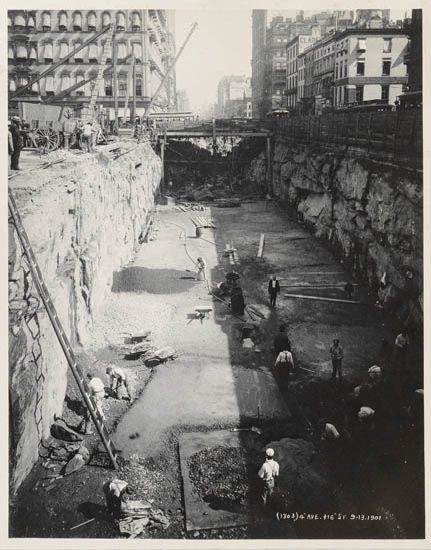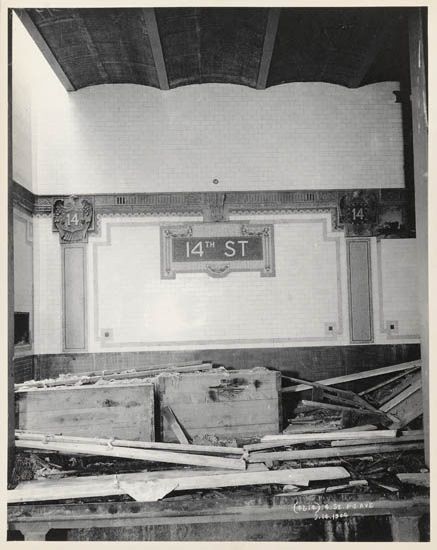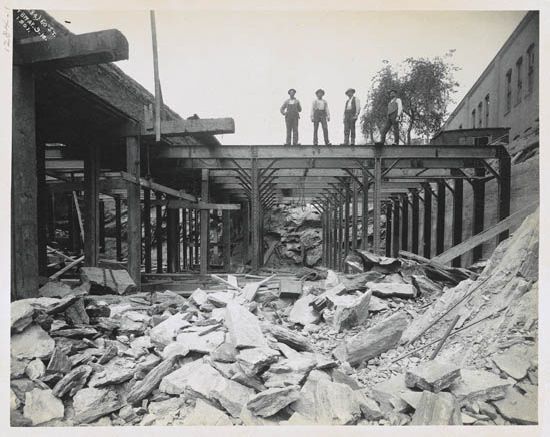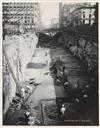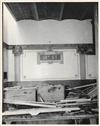Sale 2298 - Lot 65
Unsold
Estimate: $ 7,000 - $ 10,000
(NEW YORK CITY) pierre pullis (1870-circa 1935)
Rare group of approximately 75 prints by Pierre Pullis, chief photographer for New York City's Rapid Transit R.R. Commission, depicting subway construction, including subway cars, laborers, construction sites above and below ground, and completed stations, including the elaborate mosaic designs. Platinum prints, sizes ranging from approximately 5 1/2x8 to 7 1/2x9 1/2 inches (14x20.3 to 19.1x24.1 cm.), and the reverse, nearly all with an inventory number, the street address or location, and the date, in the negative. 1900-1908
Rare group of approximately 75 prints by Pierre Pullis, chief photographer for New York City's Rapid Transit R.R. Commission, depicting subway construction, including subway cars, laborers, construction sites above and below ground, and completed stations, including the elaborate mosaic designs. Platinum prints, sizes ranging from approximately 5 1/2x8 to 7 1/2x9 1/2 inches (14x20.3 to 19.1x24.1 cm.), and the reverse, nearly all with an inventory number, the street address or location, and the date, in the negative. 1900-1908
Additional Details
The historic and sometimes haunting images created by Pierre P. Pullis are most often associated with his documentation of the construction of New York City's subway system, the largest of its kind in the world. Pullis is described as "Mulatto" in the 1900-1930 United States Census reports; he and his parents were born in New York. Like another noted NYC photographer, Jacob Riis, he made his home in Richmond Hill, Queens.
Hired as official photographer in 1900, Pullis spent the next 30 years recording Gotham's streets, people, buildings, and underground infrastructure. Of Pullis's 100,000 8x10-inch glass negatives made prior to 1925, only a few thousand survive, as most had been shattered to pieces and left in a dumpster. Two rail fans salvaged what they could from that Hudson Street dumpster back in 1962, and most of Pullis's negatives now reside in the New York City Transit Museum. As for his original prints, only a handful survive, most having found their way into private collections, museums, and public archives. The vast majority are silver prints, and the small number of cyanotypes and platinum prints created by Mr. Pullis's hand between 1902 and 1907 are highly prized. All of his known photographs are 7 1/2x9 1/2-inch contact prints.
Pierre Pullis shows the city in its raw, candid state. New York's old buildings shine with amazing clarity; his objective eye scientifically focused upon architectural detail. Pullis also presents us the innocence of the city, day-to-day street life, the immigrant experience, and over a century later, still offers us a unique perspective.
Hired as official photographer in 1900, Pullis spent the next 30 years recording Gotham's streets, people, buildings, and underground infrastructure. Of Pullis's 100,000 8x10-inch glass negatives made prior to 1925, only a few thousand survive, as most had been shattered to pieces and left in a dumpster. Two rail fans salvaged what they could from that Hudson Street dumpster back in 1962, and most of Pullis's negatives now reside in the New York City Transit Museum. As for his original prints, only a handful survive, most having found their way into private collections, museums, and public archives. The vast majority are silver prints, and the small number of cyanotypes and platinum prints created by Mr. Pullis's hand between 1902 and 1907 are highly prized. All of his known photographs are 7 1/2x9 1/2-inch contact prints.
Pierre Pullis shows the city in its raw, candid state. New York's old buildings shine with amazing clarity; his objective eye scientifically focused upon architectural detail. Pullis also presents us the innocence of the city, day-to-day street life, the immigrant experience, and over a century later, still offers us a unique perspective.
Exhibition Hours
Exhibition Hours
Aliquam vulputate ornare congue. Vestibulum maximus, libero in placerat faucibus, risus nisl molestie massa, ut maximus metus lectus vel lorem.



